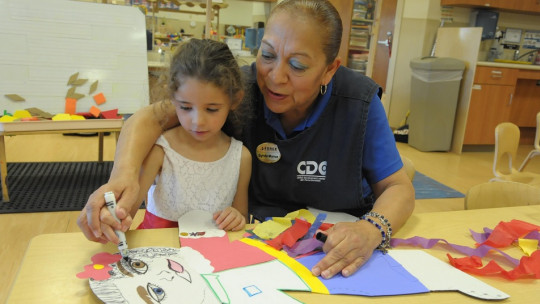
Managing homework and school tasks at home, in itself, can already create tension and a bad family environment, as it generates a problematic disposition on the part of many children.
But… What happens if to this situation, sometimes already controversial, we add some type of learning difficulty as a basis? Hopefully, as parents, the challenge will become even greater.
What is considered a learning disorder (LD)?
When we talk about difficulties in a child’s learning process, we are referring to the existence of a learning disorder (LD).
These disorders are understood as the persistent, unexpected, and specific inability to efficiently acquire certain academic skills (whether reading, writing, calculation, drawing, etc.), and that occur even though the child has normal intelligence, attends adequate schooling, and has a favorable socio-cultural environment.
Advice for the most common learning disorders
Let’s review the main TAs, specifying the guidelines that should be followed in each of them during study time and homework advice that can also be applied in the event of a possible confinement or quarantine.
Dyslexia
dyslexia It is the most common learning disorder and consists of a neurodevelopmental alteration that generates problems in learning, the use of language, reading and writing, as the processes and skills of phonological awareness, verbal memory and verbal processing speed are altered.
Children who develop dyslexia require good school methodological adaptation r, since these difficulties they present mean that they need support to learn and follow the academic pace required for their age.
The most common measures that we can adopt from home are the following.
1. Give it time
You have to give it time, accepting the fact that un/a child with specific learning difficulties may take up to three times longer to learn and you will get tired quickly.
2. Provide support
Although it has a certain autonomy, it is important that it be placed in a place close to us, where it can receive our attention, control and supervision.
3. Don’t assume you understand everything
We must check that you have understood the statement and what you should do explaining it verbally if necessary.
4. Explore different learning media
Whenever possible, we have to delve into learning and oral assessment of knowledge If the most effective means of information for the child is spoken language, it will also be the best means of learning.
5. We will not require perfect spelling
This is very complex for a child with dyslexia. In the same way, It is also not fair to penalize him for it or focus on his errors
6. Not giving the full weight of the correction
We will never let you correct a piece of writing on your own.
7. Provide learning texts
When you have to study, We must provide you with the material in writing, a secure text and never let him study from his notes, his precision can be disastrous and the results frustrating.
Dyscalculia
This TA causes a difficulty acquiring mathematical skills understand the functionality of numerical language, memorizing basic procedures and interpreting mathematical problems.
Children who present it will have problems in many daily activities, since mathematics is necessary for the correct interpretation of time scales, directions, the management of monetary resources and even for cooking, so early detection and Adequate treatment will be essential to develop basic skills that can help them in their daily lives.
In this sense, as parents we can help in the following ways.
1. Respecting their level of development
That is, adapting mathematical learning to their ability and go from the most concrete aspects to the most abstract from the experimental to numbering and mathematical operations in an ascending process of difficulty.
2. Be creative and design manipulative learning situations
These situations will allow learning through experimentation and the senses, from a more practical perspective.
3. Prioritize understanding of concepts
Understanding is more important than mechanization and automation processes.
4. Highlight the association of the number with the quantity it represents
This can be done using graphics, pieces, manipulatives, etc
5. Reinforce the performance of serialization and numerical order exercises
These activities help consolidate learning progress.
6. Practice mental math daily
Addition, subtraction, multiplication and division Taking into account the learning moment you are in.
7. Work on the correspondence of mathematical language and the operations necessary to solve a problem
Encourage him to visualize problems, for example by drawing them.
8. Use computer resources
This will make learning more attractive.
Attention deficit disorder and hyperactivity
This neurodevelopmental disorder is often included in AD since the attentional difficulties that accompany it create problems for developing new academic learning.
It is characterized by causing hyperactivity, impulsivity and attention deficit, although not all symptoms appear in all those affected, nor do they do so with the same intensity. Although many of these behaviors are normal for most children in those without ADHD tend to decrease with age when they go from preschool to primary school.
In these cases it is advisable to follow these guidelines.
1. Guarantee a structured, predictable and orderly educational environment
This will minimize the chances of distractions appearing.
2. Develop a daily routine, a visual schedule
This schedule will divide the day and allow the child to locate different activities.
3. Create a homework space without distractions
This space must have good lighting and must only have the material required for the task.
4. Take advantage of the first half of the day
In the first half of the day This is when children show a greater capacity for concentration and attention, since their daily routine has accustomed them to this since their schooling. The morning time slot is ideal for doing schoolwork, especially in the case of children with ADHD. We must take this into account for weekends or for a possible confinement.
5. Use sequencing lists, diagrams and concept maps
These resources will help you learn in an orderly and structured way.
6. Explain tasks with small instructions
Besides, we must make sure you have understood it
7. Discreetly supervise the performance of the activity
We must not give him the feeling that we are exerting pressure.
8. If a task is very dense, break it down and divide it into small parts
In primary education, The maximum of 45 minutes of homework should not be exceeded and, if there is a lot of difficulty, short breaks can be taken approximately every 20 minutes.
9. Allow mobility in the chair with prior agreement
We can allow you mobility in the study chair at certain times, which can be agreed upon in advance.
10. Give clear instructions
Clear explanations and instructions must be provided, slowly and with more repetition.
11. Be patient
It is necessary to understand his/her behavior pattern to help him/her, always reinforcing his/her good actions and using his/her interests to motivate him/her.
Author: Laia Portero Capilla, Head of the Psychopedagogy Area of PSICOTOOLS.








